Arrested! A decade after first known attack, serial rape suspect in custody
 His M.O. is terrifying: first he stalks his female victim, watching her coming and going, learning her habits. When he's ready, he slips inside her house and waits. And then a "blitz" attack– often a blunt blow to the head or face as she enters the door– stuns his victim, who he then brutally rapes before fleeing.
His M.O. is terrifying: first he stalks his female victim, watching her coming and going, learning her habits. When he's ready, he slips inside her house and waits. And then a "blitz" attack– often a blunt blow to the head or face as she enters the door– stuns his victim, who he then brutally rapes before fleeing.
And yet one victim who speaks out in this story describes a remorseful attacker, a man who said he was sorry he "had to hurt her."
Ten years. No less than seven rapes or assaults, all definitively linked through DNA left at the scene. Yet despite what police branded as unequivocal evidence that the same person committed each of these assaults, the Charlottesville serial rapist eluded capture for a decade, leaving terror and uncertainty in his wake.
That uncertainty may have finally come to an end in the early morning hours of Monday, August 13, when police officers from Charlottesville, Albemarle County, and the University of Virginia descended upon a modest townhouse in the Abbington Crossing apartment complex off Rio Road and emerged with a suspect in custody.
If the arrest itself came as a surprise after so many years with no answers, the man they arrested– a 40-year-old husband and father of four named Nathan Antonio "Toni" Washington– came as an even greater shock to those who knew him. Aside from a smattering of traffic tickets, a search of Virginia court records turned up a clean history for Washington, which means there is no DNA profile on file for him.
"He's just a nice guy," says one of Washington's neighbors who asks not to be named, but who recalls the "friendly" Washington frequently accompanying his children to the complex's pool and playground to play kickball.
The neighbor says Washington, a newspaper carrier for the Daily Progress and a meat-cutter at the Barracks Road Harris Teeter, often waved and gave him notice of meat sales.
At a press conference on Tuesday– less than 24 hours after Washington's 1am arrest– police chiefs from the city, county, UVA, and Waynesboro joined Commonwealth's attorneys and detectives from the various departments to announce and celebrate the arrest. They discussed the fact that Washington has been charged in two incidents previously connected to the serial rapist: one in the city and one in the county. But overall, the conference left most questions unanswered.
For starters, if Washington has never been linked to a serious crime, how could authorities have his DNA to connect him with the rapes?
Officials won't say much beyond this: in connection with two crimes, Washington was charged with five felonies, including forcible rape, attempted sodomy, and breaking and entering with the intent to rape. He was served with two arrest warrants, police said, one from the county and one from the city, and an official says charges are pending from the University of Virginia police department.
Among the few details police released is the fact that Washington has served in the military and that he was arrested without incident. Officials refused to give any hints about what led to his capture, saying only that it was a body of information and tips "gathered over a good period of time." However, sources close to the investigation say police are certain they have the right man– because they do already have a DNA link.
According to sources, it's typical police practice to covertly monitor a suspect over a period of days or weeks before an arrest. During that surveillance, officers look for opportunities to collect DNA evidence– from, for example, a discarded drink or cigarette butt. Once the suspect's DNA is collected, it is sent for forensic testing. While such evidence may not be strong enough to obtain a conviction, since the sample could have been tainted, if it provides a match to a crime, officers can use it to obtain "probable cause" for an arrest and then obtain a better DNA sample.
Once the suspect is in custody, another sample is taken, usually using a buccal swab to collect DNA-containing cells from the suspect's mouth. This carefully collected sample is sent to a lab for testing and is legally admissible as evidence.
According to sources, officials are waiting for the results of that formal DNA swab on Washington before making any specific comment on his connection to the other five assaults.
Of his refusal to answer most of the reporters' questions at the press conference, Albemarle County Commonwealth's Attorney Jim Camblos explained, "We're being overly cautious because it's so important."
Indeed, anyone who has lived in Charlottesville over the past decade can recall the often controversial nature of the case, which boiled over in 2003 and 2004 when Charlottesville police conducted buccal swabbing on every black man willing to submit to the test.
By mid-2004, 570 black males had given DNA samples. Though the samples were supposed to have been given voluntarily, critics claimed any black man who refused was considered a suspect. One UVA graduate student who refused penned a 2003 Hook essay with the painfully memorable line: "You fit the description."
Another local man, Larry Monroe, who submitted to the testing, later sued over the issue, claiming assault and battery, illegal search and seizure under Virginia law, and racial harassment.
His lawyer, Debbie Wyatt, says police should have known that Monroe, "hefty" at 300 pounds and 5'8", couldn't have been the serial rapist– described by at least one victim as being 6' and athletic. The case is still pending in federal court, says Wyatt, who also represents Christopher Matthew, a black man who was falsely accused of an unrelated rape in Charlottesville two years ago and who later sued his accuser. That suit was withdrawn, but Wyatt says Matthew– whose name and image were splashed across newspaper pages along with the word "rapist"– is still considering his legal options.
The controversy over buccal swabbing had law enforcement scrambling to defend themselves from charges of racial targeting.
"I don't want the sense in the community we're overstepping our legal authority," said Longo in 2004. "This is a serious case, and we're trying to do the right thing, but if we've gone too far, we need to know that."
Later in 2004, following heated meetings with leaders of the African American community, Longo agreed to pay $1,000 to have the serial rapist's DNA analyzed to help determine his racial heritage.
While all of the victims had described their assailant as black, police noted there was enough variation in victims' descriptions to raise a question. "Some of the witnesses felt he was a light-complected black, some said dark," said Captain Chip Harding, although he attributed the discrepancy to the varying conditions, including lighting, at the time of each attack.
The DNA test results showed that regardless of skin tone, the rapist was definitively of African descent.
The two attacks for which Washington has been charged are an August 2004 attack on Webland Drive off Rio Road and a November 2002 attack in the Willoughby neighborhood. The latter, police have said, was the most brutal of the rapist's assaults.
The Hook spoke earlier this week with that now 52-year-old victim, a married mother of two teenage daughters.
November 11, 2002 was a typical day, says the woman. But as she returned home from running an errand mid-morning and entered her kitchen, she saw a large black man wielding a large kitchen knife over his head and charging at her.
"I backed up about three feet, and then he was on me," says the woman, who asked that her name not be used. "He punched me in the face, and I went down immediately."
Restraining her, he detailed his sordid plans as he took her to her bedroom and raped her.
But following the assault, his demeanor changed, the woman says. He carried her to the bathroom, put her in the tub and tried to wash her body.
"He was saying, 'I'm sorry I had to hurt you,'" she recalls.
The woman says the mug shot of Washington shown on television matches her memory of her attacker's appearance.
Today, the woman still lives in the Willoughby house where the attack occurred. The only change is that the family has installed a security system. But while she has become more cautious, she's more worried that her daughters, one in high school and the other in college, will have long-lasting psychological scars from the attack.
"I'm really concerned with them, that they not be scared of everything," she explains.
Another resident of the Willoughby subdivision says the attack gave the neighborhood plenty to fear.
"People were really shaken up," says Christine Walker. "Having everything happen so close by was very scary, especially because I had young daughters the same age as her children.
"I know one neighbor who completely stopped running/walking in the neighborhood and even carried a weapon with her for self defense," says Walker, who finds comfort in the news of the arrest.
"With the arrest there's a strong feeling of ease, and my own sense of safety and value toward the neighborhood is increased," she says. While she points out there's still a chance that Washington could have been wrongly targeted, "I do have a strong sense of confidence in the police and how long and hard they've worked over the years, the investigations and resources they've used to find this person."
Telephone calls to Washington's home and to the homes of other family members were not returned, but details released thus far about his life don't offer any signs that he could have perpetrated such a reign of terror. A senior photo in the 1986 Western Albemarle High School yearbook, for instance, shows a smiling young man named Toni Washington wearing a white tuxedo. Toni Washington played JV basketball, but was otherwise not photographed participating in sports.
A colleague at the Charlottesville Albemarle Regional Airport, where Washington worked in the early 1990s, recalls Washington as nice and easygoing: "just a regular guy," he says.
That description will come as no surprise to law enforcement, who have long predicted the serial rapist would be someone who fit in with the community around him, someone whom no one would ever suspect.
If indeed Washington is the serial rapist, both of his jobs could have provided him with convenient access to potential victims. At Harris Teeter, the meat department is open, allowing customers to see the employees– even those working in the back– and vice versa.
And while Washington's early morning career as a delivery driver for the Daily Progress may cause some shudders, there's no indication so far that Washington found his victims through either of his jobs. Nor will law enforcement confirm that a victim recognized him at his Harris Teeter job, as some rumors have suggested.
On Thursday morning, August 16, Washington– now being held at the Albemarle Charlottesville Regional Jail– will be formally charged by remote video in both Charlottesville and Albemarle district courts and assigned a lawyer if he does not retain private counsel. In the meantime, police and prosecutors are working to create an airtight case.
Camblos says other information will be released in the coming days and weeks.
"A lot's going to happen," he promises.
–with additional reporting by Adam Sorensen and Erin Heisterman

Serial rape suspect Nathan Antonio Washington worked in the meat department at the Barracks Road Harris Teeter.
PHOTO BY COURTENEY STUART
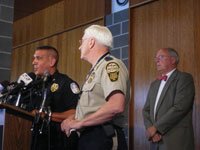
Charlottesville Police Chief Tim Longo and Albemarle County Police Chief John Miller spoke together at a press conference Monday afternoon, August 12, announcing Washington's arrest, with Albemarle Commonwealth's attorney Jim Camblos at right.
PHOTO BY ADAM SORENSEN

A girl's bike leans against the front steps of the Nathan Antonio Washington's duplex at the Abbington Crossing apartment complex off Rio Road. Washington is married and has four children, according to police.
PHOTO BY COURTENEY STUART
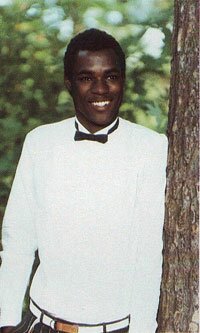
A young man named Toni Washington graduated from Western Albemarle High School in 1986.
PHOTO COURTESY WESTERN ALBEMARLE HIGH SCHOOL
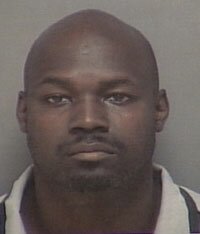
Nathan Antonio Washington in his August 12, 2007 mugshot.
FILE PHOTO
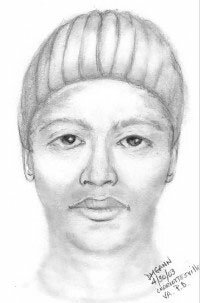
This police sketch of the serial rapist was released in 2003.
FILE PHOTO
Mapping the menace
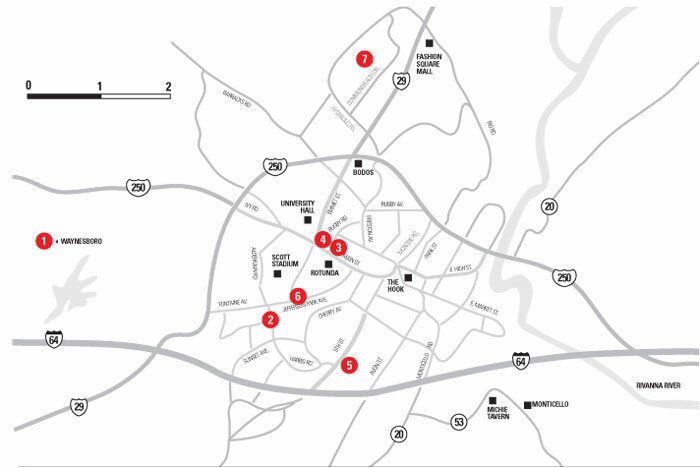 1. February 11, 1997, 12am – rape in Waynesboro hotel room.
1. February 11, 1997, 12am – rape in Waynesboro hotel room.
2. June 12, 1999, 11:30pm – rape in the 2300 block of JPA near Fry's Spring.
3. April 15, 2000, 2am – rape in the 400 block of 13th Street NW.
4. May 3, 2000, 3am – attempted rape and assault in Lambeth Parking lot off Emmet Street across from U-Hall.
5. November 11, 2002, 9am* – rape and brutal beating in Willoughby subdivision.
6. April 26, 2003, 3:15am – sexual assault in a bathroom in the 1900 block of JPA.
7. August 18, 2004, 3:20pm* – attempted rape and sodomy on Webland Drive.
*Nathan Antonio Washington is currently charged only in connection with the Willoughby and Webland attacks.
Positive DNA links
By Lisa Provence
February 11, 1997 A professional woman in her late 20s was on business in Waynesboro. She returned to her room at the Comfort Inn around midnight, then left her room door open while she went to her car to get her laptop computer. She was attacked when she returned to her room, but she wasn't sure whether the attacker had been inside all along or followed her in, according to Waynesboro police.
The woman was raped, but she wasn't beaten as women in later attacks were. She provided a description of a black male with an athletic build and hair short on the sides and flat on top.
By the end of 1999, DNA from that incident was linked to another rape in Charlottesville. And as all the other attacks here, police wondered: Why was he in Waynesboro that night?
June 12, 1999 It was before midnight when a Brazilian woman in her early 30s returned from work to her house in the 2300 block of Jefferson Park Avenue, an area near Fry's Spring that houses more graduate students and UVA employees than undergraduates.
The attacker entered through an unlocked window and was waiting for the woman in her bedroom. He choked her and pulled her hair, and more chillingly, told her he'd been watching her.
The room was dark, which made it hard for the victim to give a good description of her attacker. And yet she told police she felt like she'd seen him before, perhaps on her street.
After the attack, in the dust on the rear window of the woman's car, "RICK" was written, which she hadn't noticed before. Was it a clue? Police weren't sure.
Virginia's DNA databank was making its first cold hits around this time, and on December 10, 1999, Charlottesville police were notified that DNA from this rape matched that from the Waynesboro attack two years earlier. It was the first link in two jurisdictions to an unknown assailant through DNA.
April 15, 2000 A UVA student in her early 20s was awakened around 2am by a man's hand over her mouth and his arm around her neck. He threatened to choke her if she made any noise.
So while another person slept in the ground-floor apartment in the 400 block of 13th Street NW, the young woman was raped. The assailant entered through a kitchen window in the back of the apartment, continuing his pattern of unforced entry into a residence.
Once again, because of the darkness of the room, the woman was unable to provide enough of a description for a composite drawing. She did describe a medium to light-complexioned male weighing between 180 and 200 pounds.
DNA from this assault was linked to the two earlier attacks.
May 3, 2000 A little more than two weeks after the April 15 attack, a UVA undergrad was in the Lambeth parking lot off Emmet Street across from U-Hall at 2:40am. Her attacker jumped from beside a parked car and grabbed her. Using "excessive force," according to police, he choked and beat her. And he indicated that his intention was a sexual assault.
This woman knew karate, fought back, and was able to escape. "She was a better fighter than he was," Lieutenant J.W. Gibson said.
That woman's injuries did not require hospitalization. However, university police noticed blood on the coed's clothing. They sent it away, and again found a match with the serial rapist.
November 11, 2002 The 48-year-old woman had been out running errands on a Monday morning. When she returned to her home in the middle-class Willoughby neighborhood around 9am, she thought her house was secure because of the dead bolt on the door. What she didn't know was that a back door inadvertently had been left open.
This was the rapist's most horrific attack yet. Police declined to say whether a weapon was involved, but they did say the woman was brutally beaten. She was hospitalized, and her serious facial injuries required surgery. This case is one of the two for which Washington has been charged.
April 26, 2003 Another attack in the student-heavy JPA neighborhood was conclusively linked through DNA to the serial rapist.
August 18, 2004 The attack on Webland Drive off Hydraulic Road is the last attack conclusively linked to the serial rapist. In this assault– one of two with which Nathan Antonio Washington has been charged– the assailant used a "blitz" attack, waiting inside his victim's home then punching her in the face before sexually assaulting her.
#